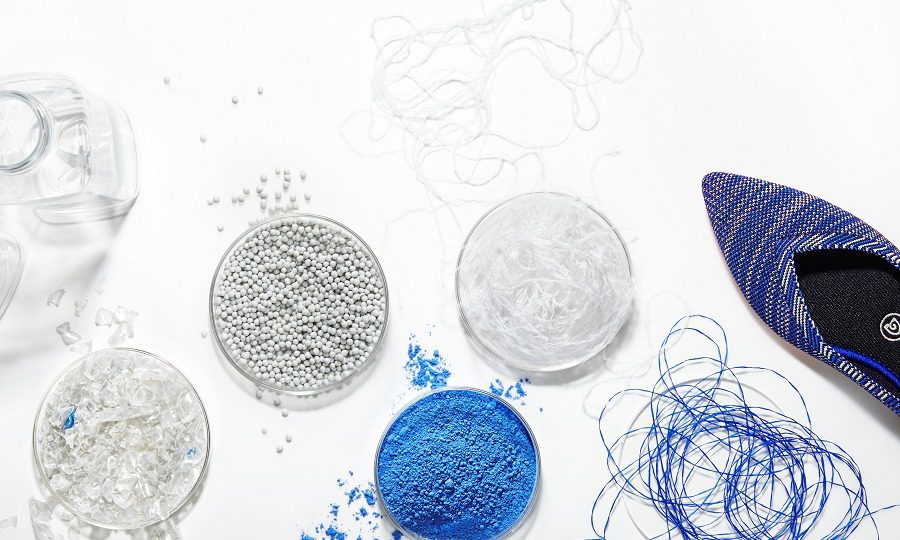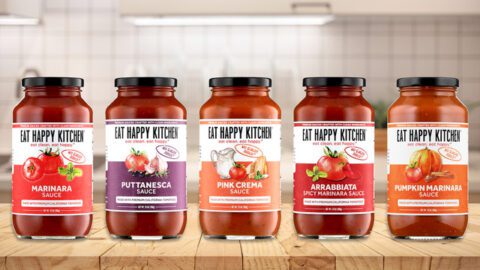Since its founding in 2016, Rothy’s has taken sustainability seriously. The vertically integrated footwear retailer uses recycled materials to make its shoes — including more than 50 million single-use plastic water bottles that the company turns into thread. Rothy’s manufacturing processes also are designed to minimize waste; for example, 3D knitting technology crafts shoes into their correct shape and silhouette, which eliminates the wasteful process of cutting a circle from a square of material.

But there’s always more that can be done in the battle to reclaim the planet, and all without losing sight of the need to maintain a healthy business. Saskia van Gendt, recently hired as Rothy’s first-ever Head of Sustainability, shared how she plans to build on the company’s existing programs, and how shifting consumer preferences are driving the industry’s move to more eco-friendly practices.
Retail TouchPoints (RTP): You wrote a LinkedIn post that discussed the outsize role the apparel industry makes in terms of negative impacts on the environment. What’s the scope of the problem?
Saskia van Gendt: The apparel and footwear industry is currently worth more than a trillion dollars in the U.S. and rapidly grows every year. Yet it remains incredibly wasteful, accounting for more than 8% of global climate impact. More than 80% of that carbon footprint comes from materials and manufacturing alone — and apparel production facilities leave an average of 30% excess waste on cutting room floors.
Because there are environmental issues at almost every step of the industry, there are many ways to start making changes towards a meaningful solution. For me, it boils down to three things:
- Reclaiming and transforming materials;
- Extending a product’s life; and
- Directly reducing our footprint.
RTP: Rothy’s already supports greater sustainability. What do you hope to bring to the company that will build on what’s already established?
van Gendt: Sustainability has been at the forefront of Rothy’s brand identity since it was founded in 2016, and is one of the main reasons I’m so excited to join Rothy’s as the first-ever Head of Sustainability. As I settle into my new role, my priority is building on the innovations and work that Rothy’s has already done to date, while developing and implementing new strategies that will minimize the environmental impact of our supply chain further.
Rothy’s is already unique in its whole-brand approach — totally owning the manufacturing process, from zero-waste production to fulfillment practices. My career so far has focused almost entirely on developing ways to improve consumer products to better serve both consumers and the environment, especially by improving product and supply chain footprint globally. In my time at Method, for example, we became the first brand to develop products made from marine plastics and built the first LEED Platinum certified factory in the cleaning industry. I’m excited to bring that expertise to Rothy’s as it continues its ambitious growth trajectory.
RTP: In general, what are the biggest challenges the apparel industry faces in addressing sustainability?
van Gendt: The biggest overarching challenge is industry inertia. How do we shift an industry that has historically not valued circularity?
Real impact is about more than just marketing; it’s about things like supply chain innovation and sourcing alternative materials, which aren’t overnight fixes and can be seen as large hurdles to overcome — especially for brands that are accustomed to the way things have always been. If we can motivate and inspire brands to change, hopefully we’ll be able to overcome industry inertia together.
RTP: What role does consumer pressure and shopper preference play in pushing companies toward greater sustainability?
van Gendt: There’s no doubt about it — consumers are in charge, and as brands it’s our job to make products that people want to buy. Today, more and more consumers are interested in products with a sustainable mission. But I’ve found that products need to look and perform well first in order to gain popularity.
Take Rothy’s as an example. Word of mouth remains our largest growth driver, and women buy these shoes first and foremost because they’re comfortable and stylish. And then, it’s an added bonus that they’re made from recycled materials and washable so they last longer. Women love to share those benefits with their friends, and that word-of-mouth magic and support of these shoes creates more demand and trust for sustainable products across the board.
RTP: Is sustainability compatible with a strong bottom line for manufacturers, retailers and others in the ecosystem? Can it actually benefit the bottom line?
van Gendt: Sustainability is absolutely compatible with a strong bottom line. Especially in fashion, if you balance sustainability, style and innovative craftsmanship, it can be beneficial to the business side.
Owning the whole supply chain is a great example of how to do it. Not only does this model make it possible to react to demand and bring new products to market quickly, but it also makes it possible to integrate sustainability throughout the entire company, from limiting overproduction (and costly waste) to creating efficient production processes. Rothy’s has been able to successfully do this and demonstrate a new and better model for the apparel industry.
RTP: If you could change one thing about how apparel is manufactured, shipped and retailed so as to improve the environment/sustainability, what would it be?
van Gendt: I think the industry should be prioritizing quality and product longevity. If we buy products that are made to last and pass along as heirlooms, we can greatly reduce the apparel footprint. This starts with sourcing the right materials — including durable materials like reclaimed plastic — and designing styles that can endure from season to season.













